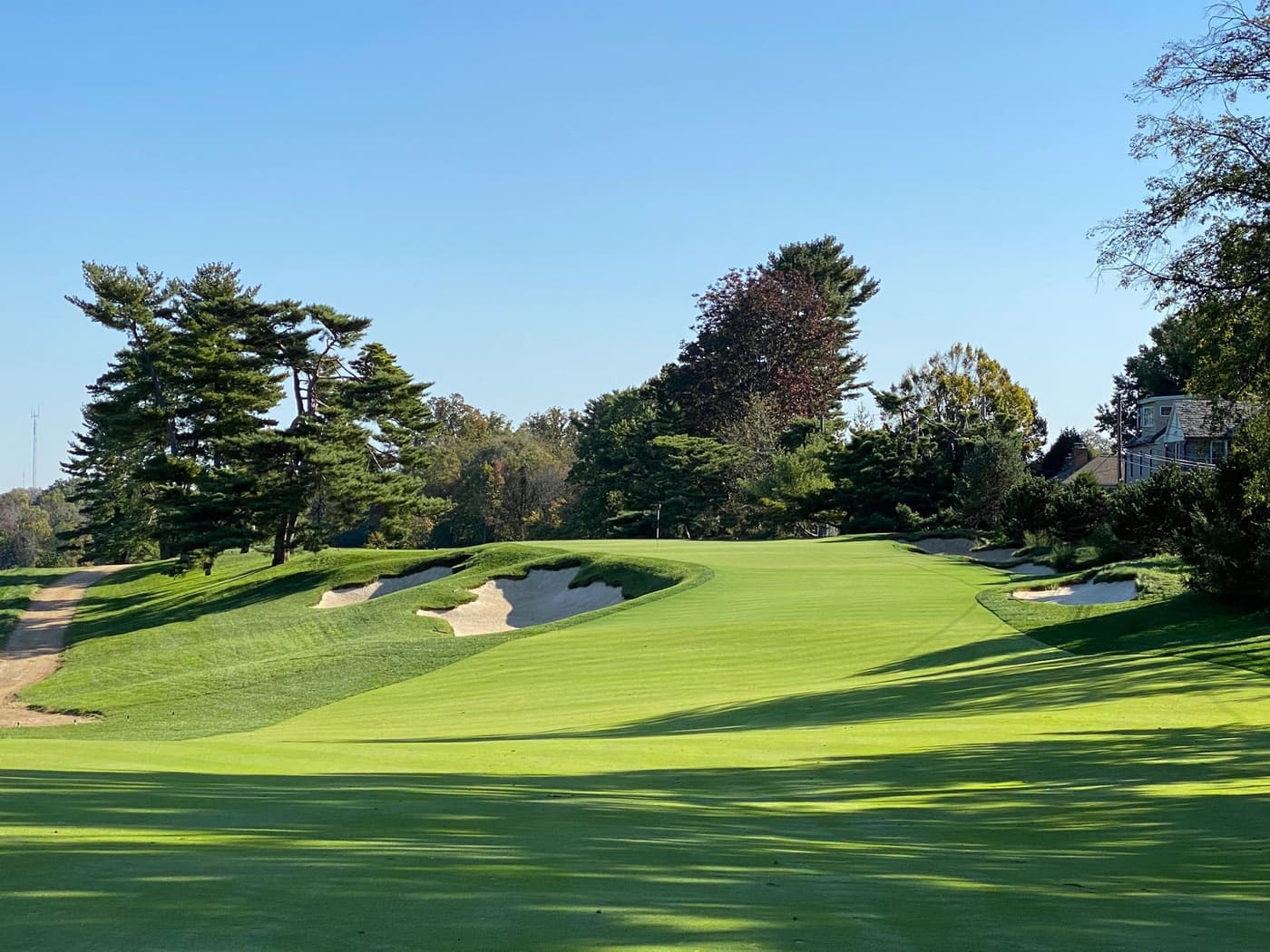- Address450 Ardmore Ave, Ardmore, PA 19003, USA
- Championships hosted
When Merion Golf Club was founded in 1896, Philadelphians were more likely to play cricket than golf. They even sent touring cricket teams to England!


But it wasn’t long before the golf bug really hit home and wealthy Philadelphians decided that they needed a top-notch golf course, so they dispatched Hugh Wilson back to Scotland to check out a few decent course designs. After seven months in Britain he returned with some great ideas for the new Merion and he set about putting them into practice. In 1912, the East course at Merion was ready for play and, considering Wilson was a complete amateur architect, he managed to produce one of the greatest courses in the States.
“Merion is an inland course,” wrote Robert Trent Jones in The Complete Golfer, “but the framework of its greens with their combinations of multiform mounds, oriented with sand and sod, give it somewhat the appearance of a seaside links. It is these well-shaped, artistically appealing green areas that make Merion characteristically different from most American courses and, further, explain to a considerable extent why Merion remains a vital test of golf, whereas most other courses of its pre-World War I vintage have long since lost their snap and crackle.
Analyze Merion closely. It has something. It keeps the pressure on the tournament golfer all the way through to the home hole. It is harder on the average golfer than a course like Augusta National, but its variety of fairway contours, the angles of its green surfaces, its contiguous ‘white faces,’ and the intelligence of its routing have made for a course that age has not withered nor custom staled.”
We could write a small book about the East course at Merion. For example, this was where Bobby Jones won the US Amateur Championship to complete his 1930 Grand Slam. Jack Nicklaus scored 66, 67, 68 and 68 in his four rounds of the 1960 Eisenhower Trophy, causing an international stir.
In the Golden Bear’s book, The Greatest Game of All, he commented, “Merion’s setting is nowhere near as picturesque as the Augusta National, the most beautiful meadowland course I know, or as majestic as Pebble Beach, with its awesome cliffs and ocean headlands. It is a park-type course, set in the suburbs. It occupies pleasant rolling terrain, but it is what its designer, Hugh Wilson, did with that terrain that makes Merion exceptional. Each of the eighteen holes has its own personality. Each is interesting to play. Each requires that you use your head to get your par.”
That’s what Jack thinks and we’d so love to hear what you think about Merion’s East course, especially if you've played it since Gil Hanse's 2014 restoration.
David Rossiter plays Merion several times each year and in 2012 he commented as follows:
"I often read or hear, when someone is trying to describe the attributes of a golf course, that "I had to use every club in my bag". Nowhere is this statement is more true than at Merion. The course is made up of long holes, short holes, and medium length holes. Decisions must be made on what club to use, to strategically attack a hole, on nearly every tee.
The rough must be avoided in order to have any chance of making par on a hole. There have been many wrist sprains inflicted on golfers trying to advance their ball out of the penal Merion rough. Hit in this stuff a couple times early in a round, you'll then be standing on the tee boxes with both hands on the steering wheel, for the remainder of the day. This of course just makes matters worse, and you just can't seem to get yourself back on track, making one bogey after another.
The green complexes are just that, very complex. In a blink of an eye, you can make a huge number on any hole. The greens themselves are pitched and undulating. When Hugh Wilson made these greens, the thought of 12' on the stimpmeter was inconceivable. When Merion is hosting an event or a tournament, the greenspeeds are 12' or higher and possible hole locations are reduced dramatically.
Many have stated that the final five holes "are the finest finishing holes in golf". No one knows for sure, but I'll say that I can't wait to see the U.S. Open played there in a few years. I know that the lead will change hands on those final holes, and it will not be one of the long hitters who will win. The winner will be someone who can hit every club in his bag well."
The US Open returns to the East course at Merion Golf Club in 2013. Merion last hosted the US Open in 1981 when David Graham became the first Australian to win the US Open Championship."
Update: Justin Rose claimed his first Major title at a brutally tough Merion Golf Club in 2013 becoming the first Englishman to win the U.S. Open since Tony Jacklin in 1970.
Course Reviews
Leave a Review
This course has not been reviewed.
If you have played this course, consider .
Thanks for the review
Your review has been successfully submitted and will be reviewed for approval.
Course Reviewed
You’ve already submitted a review for this course.
Course Architect
View All
Hanse earned a Master's degree in Landscape Architecture from Cornell University in 1989, achieving the William Frederick Dreer Award, which allowed him to spend a year overseas with Hawtree Ltd.


